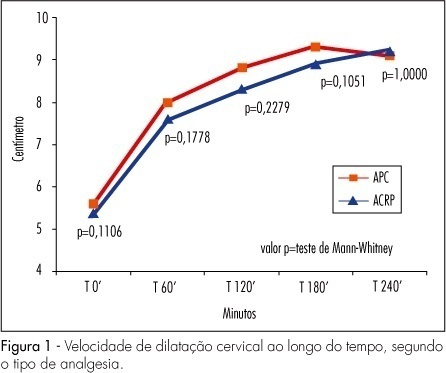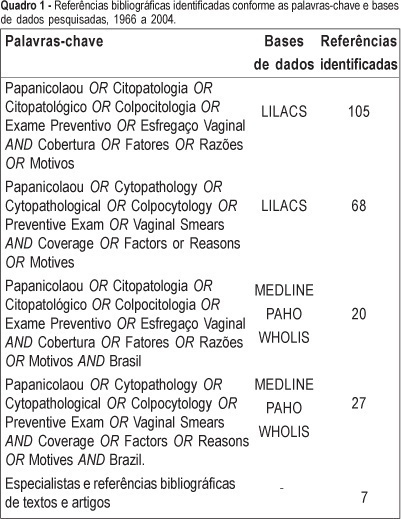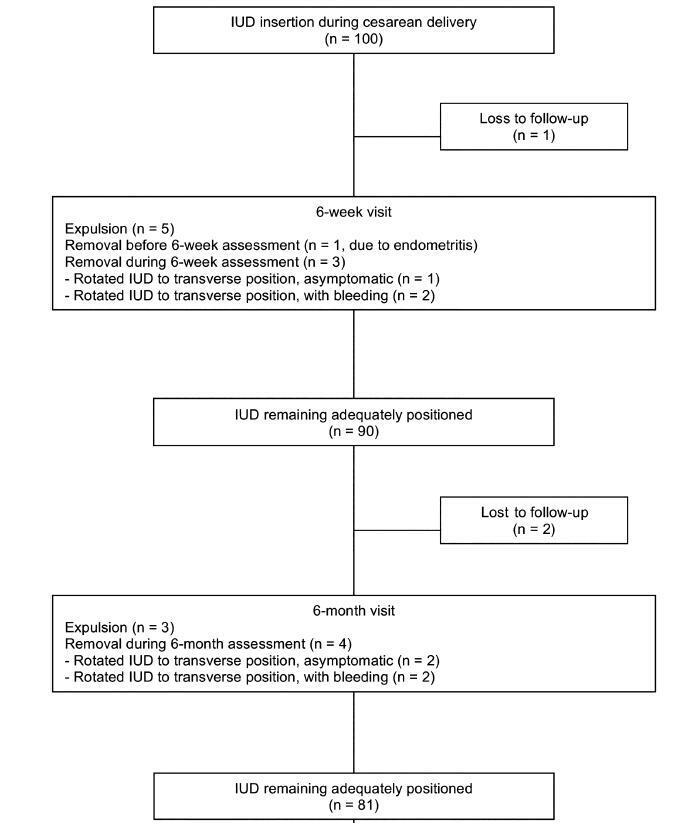Summary
Revista Brasileira de Ginecologia e Obstetrícia. 2008;30(10):483-485
Summary
Revista Brasileira de Ginecologia e Obstetrícia. 2014;36(11):484-488
DOI 10.1590/S0100-720320140004952
To evaluate sexual function in women undergoing assisted reproductive techniques.
This is a case-control study including 278 women assisted in Human Reproduction services and at the Gynecology Clinic of the University Hospital, Federal University of Goiás, Brazil. The women were divided into a study group (168 infertile women) and a control group (110 fertile women), and they answered the Female Sexual Function Index (FSFI) questionnaire used the assess the sexual function. We calculated the odds ratio (OR) for the chance of sexual dysfunction in infertile women (p<0.05).
Out of the analyzed women, 33.09% reported sexual dysfunction, with no difference in the FSFI score between groups (p=0.29). The prevalence of sexual dysfunction was of 36.30% among infertile women and 28.18% among fertile women; however, there was no difference between FSFI scores (p=0.36). The desire and arousal domains were significantly different among infertile women (p=0.01). Infertile women had the same chances of having sexual dysfunction as fertile women (OR=1.4, 95%CI 0.8–2.4; p=0.2).
There were no differences between infertile and fertile women. Infertile women undergoing assisted reproduction techniques require professional approach to sexual health regarding desire and arousal.
Summary
Revista Brasileira de Ginecologia e Obstetrícia. 2007;29(9):484-489
DOI 10.1590/S0100-72032007000900008
In Brazil, where 90% of the childbirths occur in hospitals, 67.1% of the cases of maternal death are due to direct obstetric causes, mainly hypertensive disorders, but a quarter of the deaths are due to indirect obstetric causes. As maternal death is a rare event, estimated in 76/100,000, the study of severe maternal morbidity, following international literature, can contribute to qualify obstetrical care. Maternal morbidity is a continuum that ends with death, but there is a separate group, with extreme severity, known as near miss. From the literature review, there are the difficulties to obtain an operational definition of the cases of extremely severe morbidity or near miss. The prevalence ranged from 0.80-8.23%, according to the defining criteria and health care provided at the region. The characterization of severe maternal morbidity and near miss allows for monitoring the process of obstetrical care and could help to qualify treatment of maternal urgencies and emergencies, interrupting the process that can lead to death.
Summary
Revista Brasileira de Ginecologia e Obstetrícia. 2009;31(10):485-491
DOI 10.1590/S0100-72032009001000003
PURPOSE: to compare maternal and perinatal results, after the use of continuous peridural versus combined rachidian and peridural analgesia in primiparous parturients. METHODS: randomized clinical trial with 128 primiparous pregnant women in labor, divided into two groups: peridural analgesia (CPA) with 65 women, and combined continuous rachidian and peridural analgesia (CRPA) with 63, all of them admitted in the pre-labor period at two maternities in Jundiai, in the state of São Paulo. The variables studied were: latency of analgesia onset, pain intensity, total time until complete dilation, Apgar index at the first and fifth minutes, labor duration, degree of motor blockade, adverse effects such as vomiting, pruritus, arterial hypotension and degree of maternal fulfillment. Inclusion criteria were: primiparous, physical condition ASA 1 and 2, an only foetus, cephalic presentation, term delivery, 3 to 6 cm cervical dilation, and analgesia required by the obstetritian. Women with morbidity, membrane rupture, fetal abnormality and use of opioids up to four hours before were excluded. The Mann-Whitney test was used for the statistical analysis of non-parametric continuous variables, and Fisher's exact and Pearson's χ2 tests, for the categoric variables. RESULTS: there was no difference between the groups concerning the length of cervical dilation, labor duration, maternal hemodynamic parameters, newborn vitality, analgesic complementation during labor and type of delivery. Analgesia onset was quicker in the CRPA group, and the CPA group presented less motor blockade. Differences concerning adverse effects such as nausea, vomiting, pruritus and hypotension have not been observed, but hypotension was more frequent in the CPA group (6.3 versus 3.1%). CONCLUSIONS: both techniques have proved to be safe and efficient, but CRP has provided an earlier onset, with quicker pain relief. The lesser motor blockade in the CPA group has allowed the parturients more active movements in bed and more effective collaboration during the expulsion period. Most women were pleased with the analgesia they got. The doses of local anesthetics and opioids used in both analgesic techniques and the complementary doses, equal in both groups, neither had any significant adverse effect nor affected newborn vitality.

Summary
Revista Brasileira de Ginecologia e Obstetrícia. 2012;34(11):485-487
Summary
Revista Brasileira de Ginecologia e Obstetrícia. 2005;27(8):485-492
DOI 10.1590/S0100-72032005000800009
PURPOSE: to present an overview of the coverage of the Pap smear in Brazil, emphasizing the determinant factors associated with failure of women to submit to the test. METHODS: the literature was reviewed using the LILACS (Latin-American and Caribbean Literature in Sciences of the Health), MEDLINE - 1966 to 2004 (International Literature in Sciences of the Health), PAHO (Collection of the Library of the Pan-American Organization of Health), and WHOLIS (System of Information of the Library of OMS) databases. The review was enlarged through the search of bibliographical references of relevant studies, request for published and unpublished studies by specialists, and other sources. Articles that fulfilled the following criteria were selected: to be a cross-sectional study, carried out in Brazil, including information about periodicity of the Pap test (some time in life or in the last three years) and/or containing information about factors associated with failure of women to submit to the test. Duplicates and articles without summary were excluded. A total of 13 articles fulfilling these criteria were selected. RESULTS: there are few studies on the coverage of Pap smear in Brazil. Most of them are concentrated in the big cities of the South and Southeast regions of the country. Besides the shortage, little methodological standardization exists in relation to the sampling and profile of the investigated women, which turns difficult the comparison among them. These methodological differences must have contributed to the great variability found in the coverage. However, in spite of all of the problems, a trend of time series increase is observed in the percentage of women who had at least one Pap smear in life. The two studies accomplished in the eighties showed coverage of 55.0 and 68.9% some time in life, while a household survey carried out in 2002 and 2003 presented values that varied from 73.4 to 92.9%; however, two studies of national inclusion presented estimates below 70.0% in the last three years. On the other hand, some variables were associated with the women's failure to submit to the Pap smear: low socioeconomic level, low education, low family income, and to belong to the younger age groups. CONCLUSION: the data here presented point to regional inequalities in the coverage of the Pap smear in the Brazilian female population and to the need of intervention targeted to those factors associated with women's failure to submit to the Pap smear.

Summary
Revista Brasileira de Ginecologia e Obstetrícia. 2019;41(8):485-492
Themoment of admission for deliverymay be inappropriate for offering an intrauterine device (IUD) to women without prenatal contraception counseling. However, in countries with high cesarean rates and deficient prenatal contraception counseling, this strategy may reduce unexpected pregnancies and repeated cesarean sections.
This was a prospective cohort study involving 100 women without prenatal contraception counseling. Postplacental IUD was offered after admission for delivery and placed during cesarean. The rates of IUD continuation, uterine perforation, and endometritis were assessed at 6 weeks and 6 months, and the proportion of women continuing with IUD at 6 months was assessed with respect to the number of previous cesareans.
Ninety-seven women completed the follow-up. The rate of IUD continuation was 91% at 6 weeks and 83.5% at 6 months. The expulsion/removal rate in the first 6 weeks was not different from that between 6 weeks and 6 months (9 vs 9.1%, respectively). There were 2 cases of endometritis (2.1%), and no case of uterine perforation. Among 81 women continuing with intrauterine device after 6-months, 31% had undergone only the cesarean section in which the IUD was inserted, 44% had undergone 2 and 25% had undergone 3 or more cesarean sections.
Two thirds of the women who continued with IUD at 6 months had undergone 2 ormore cesarean sections. Since offering trial of labor is unusual after 2 or more previous cesareans, we believe that offering IUD after admission for delivery may reduce the risk of repeated cesarean sections and its inherent risks.
